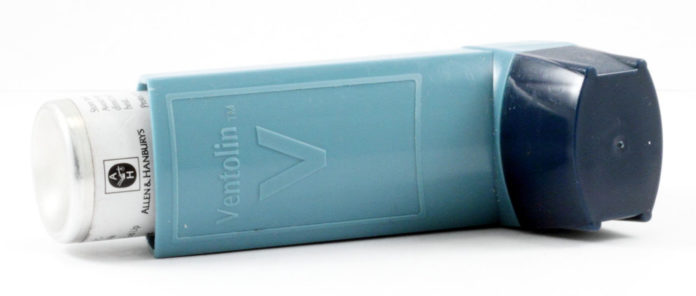
This is the first article in our series looking at health conditions in children. Later in the week, we’ll have articles about childhood migraines, bed-wetting in older kids, and nightmares and night terrors.
When a child is diagnosed with asthma, parents usually have a number of questions. How serious is asthma? Will the child grow out of it? How can it be treated? It can be difficult to get clear answers, as asthma affects different children in different ways.
Asthma is one of the most common chronic childhood illnesses in Australia, affecting more than 10% of children. It is characterised by lower airway inflammation and recurrent flare-ups, often triggered by irritants such as viruses, allergens, laughing, or even exercise. This is where the airway’s smooth muscle contracts, bringing with it symptoms of wheezing, breathlessness, chest tightness and coughing.
The severity of the illness can range from mild and intermittent, to life-threatening. Although the majority (75%) of children have mild symptoms, and less than 5% have severe asthma, children unfortunately continue to die from the illness. In 2014, six children under 14 years and five between 15 and 25 years of age died from asthma.
How severe it is deemed to be depends on the frequency of symptoms (daily, weekly, less than every six weeks, more than every six weeks), medications required to control symptoms, and lung function tests undertaken in children aged over six years.
Will they grow out of it?
The natural history of asthma also varies from one child to the next. Symptoms may begin at any age, may persist or stop, and then may recur many years later. The majority (70%) of young adults with asthma have had recurrent wheeze in their preschool years. However, in a large longitudinal Australian study, two thirds of children with mild intermittent asthma did not have asthma symptoms during adulthood.
Those with more persistent or severe asthma in childhood, or those who also have hayfever, are less likely to grow out of their asthma. There is also a risk that those with asthma during childhood will have a resurgence of their symptoms during adulthood and are more at risk of developing chronic obstructive pulmonary disease (an umbrella term for a number of lung diseases that prevent proper breathing) in later life.
Young children under the age of five present a diagnostic dilemma. Wheeze is a common symptom with respiratory viral infections for infants and toddlers. They are unable to perform lung function tests because they cannot breath in the way the test requires, which can help with diagnosis of asthma in older children. Some doctors call this “viral-induced wheezing”, while others call it “intermittent asthma” – which unsurprisingly leads to confusion.
The majority of these young children will not develop asthma, and the Asthma Predictive Index was developed to help identify those at lower risk. The absence of wheeze apart from with colds, no family history of asthma and no history of hayfever or eczema may be able to help predict those who will not develop asthma.
How to manage it
Management involves two main groups of therapies to control asthma symptoms and manage flare-ups. First, there is symptom relief during flare-ups, using reliever inhalers, which relax the smooth muscle of the airways and allow them to open up, such as salbutamol (the brands are called Ventolin and Asmol).

Second, preventer (or controller) medications aim to reduce the underlying inflammation in the airways and therefore reduce sensitivity to irritants. The mainstay of preventer treatment is inhaled corticosteroids (steroid hormones), although some children can have their asthma controlled with an oral tablet (called montelukast).
Newer treatments are being added to help manage certain subgroups, such as those with severe asthma or exercise-induced symptoms, by targeting specific molecules involved in the inflammation pathway that causes asthma.
Issues with treatment
Unfortunately, one of the biggest issues in treating asthma is patients not taking their inhaled medications correctly or as frequently as recommended by missing doses.
Inhaler techniques should be taught by a qualified professional, because if the inhaler is not used correctly the medication will not be delivered to the lungs properly. The National Asthma Council of Australia has informative videos with instructions on inhaler techniques.
All asthma patients should have a clearly written asthma action plan from their doctor or nurse that documents which medications to take regularly, which medications to take as needed, as well as when to seek a medical review. This should be reviewed every six months. The school (or pre-school) should also have an asthma first-aid plan for each child with asthma.

Reducing environmental exposure can have a beneficial effect on symptoms for those with asthma, such as reducing second-hand tobacco smoke exposure and reducing exposure to proven allergens such as pets or dust mites.
The treatments we have are excellent in the short and medium term, but unfortunately do not cure asthma and do not prevent future flare-ups when discontinued.
Research into asthma is leading to a better understanding of what causes the disease, as well as allowing us to develop preventative strategies and personalised treatments for each child. A diagnosis of asthma, with appropriate management, shouldn’t hold any child back from doing whatever they want to do.
Louisa Owens received a PhD top-up scholarship from the Asthma Foundation of Western Australia.
Adam Jaffe previously received funding from GSK, Novartis and MSD.
